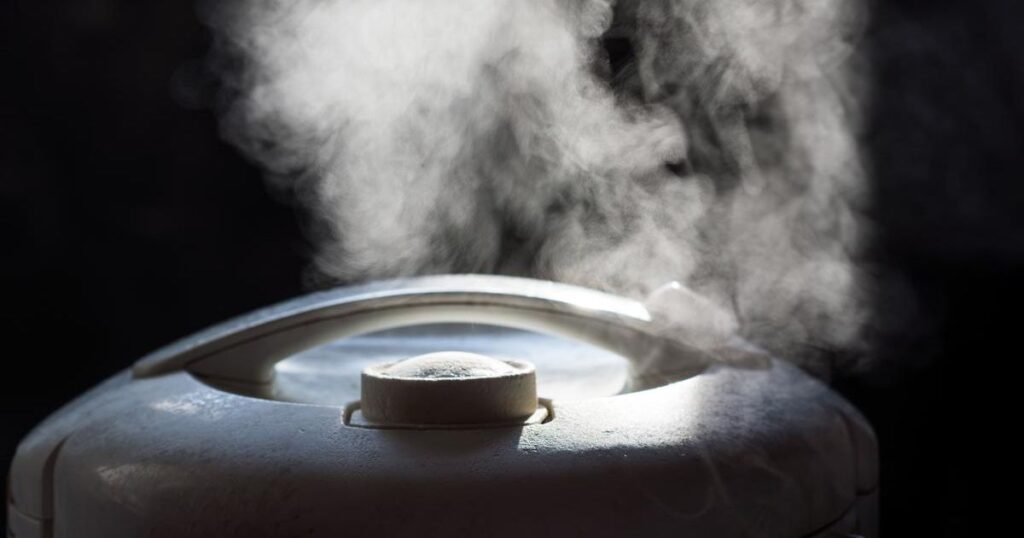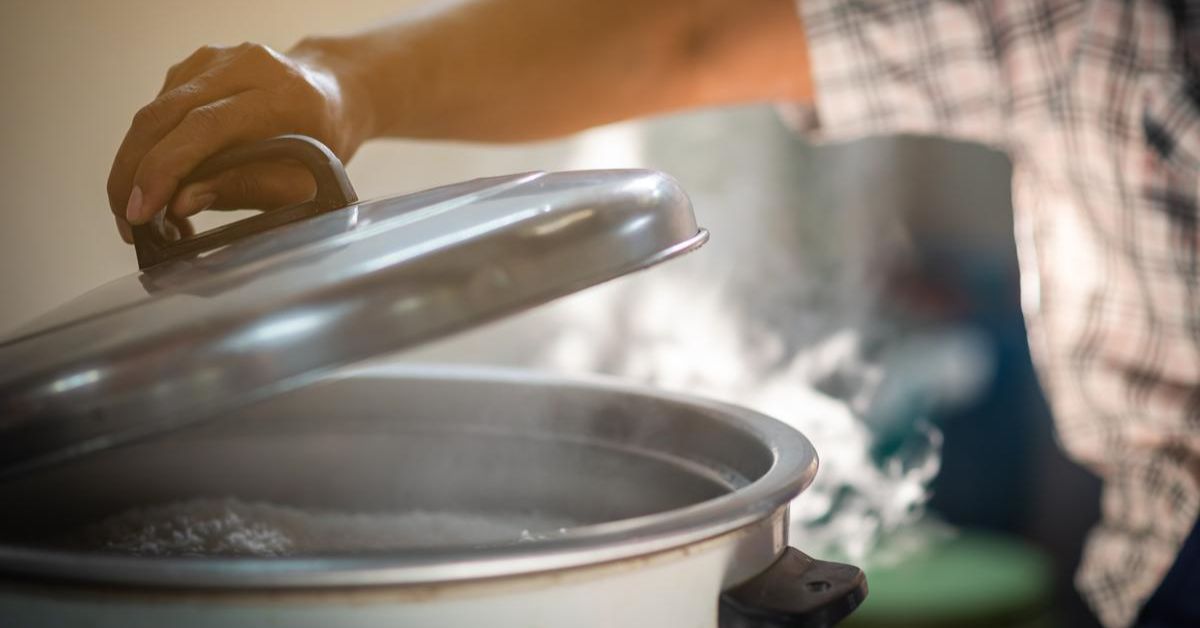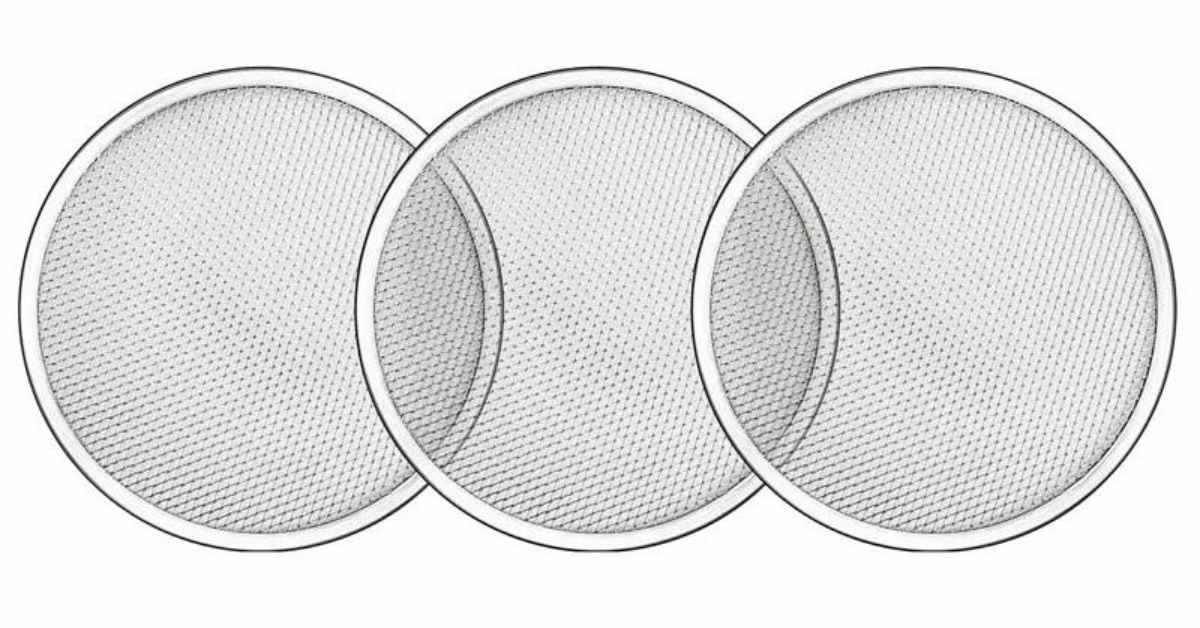Are you noticing an unpleasant burning smell coming from your rice cooker? It can be quite concerning and leave you wondering what might be causing it. In this article, we will delve into why your rice cooker smells like burning.
By understanding the underlying causes, you can take appropriate measures to resolve the issue and ensure safe and delicious meals. Let’s explore the potential culprits behind this unpleasant odor and determine how to address them effectively.
Before we dive into the explanations, let me share my experience encountering a burning smell from my rice cooker. I remember one evening when I eagerly prepared a delicious batch of rice for dinner.
As the aroma filled the air, my anticipation turned into disappointment when I detected an unpleasant burning scent. It not only affected the flavor of the rice but also left me concerned about the safety of my appliance. I quickly realized that this issue needed to be addressed, and I set out to uncover the underlying causes.
Table of Contents
ToggleWhat Causes the Rice Cooker Smells Like Burning
When understanding why your rice cooker emits a burning smell, several factors come into play. You can gain insights into this issue by examining the science behind rice cooker heating and identifying common causes. Let’s explore the possible reasons behind the burning smell and learn how to identify the cause effectively.
The Science Behind Rice Cooker Heating

To comprehend why a rice cooker may emit a burning odor, it’s essential to understand how these appliances work. Rice cookers utilize a combination of heat, moisture, and precise timing to cook rice to perfection. Most rice cookers feature an inner pot with a heating element at the bottom. This heating element produces heat transferred to the bank and rice. As the water in the pot reaches boiling point, it creates steam, which cooks the rice. The rice cooker’s thermostat helps maintain a consistent temperature throughout the cooking process.
Common Causes of the Burning Smell
Overcooked Rice: One common cause of a burning smell is overcooking the rice. If the rice is left in the cooker for too long or the water-to-rice ratio is incorrect, the rice can dry and stick to the bottom of the pot. This can lead to the rice getting burnt and emitting a burning odor.
Leftover Starch: Rice contains starch, and some may stick to the sides or bottom of the pot during the cooking process. If this starch is not cleaned correctly after each use, it can accumulate and eventually burn, resulting in an unpleasant smell.
Damaged Heating Element: A faulty or damaged heating element can also contribute to a burning smell. If the heating element is not functioning correctly, it may generate excessive heat or uneven heating, leading to the burning or scorching of the rice.
Electrical Issues: In some cases, the burning smell may be caused by electrical
problems within the rice cooker. This could be due to loose connections, faulty wiring, or a malfunctioning circuit. It is crucial to address these electrical issues promptly to ensure safety.
How to Identify the Cause
To identify the specific cause of the burning smell in your rice cooker, you can follow these steps:
Inspect the Rice: Check the rice inside the cooker for signs of burning or overcooking. If you notice a layer of steamed rice sticking to the pot’s bottom or an unusual texture and color of the cooked rice, overcooking might be the cause.
Examine the Pot: Carefully inspect the inner pot for residue or leftover starch. If you find a buildup of starch that appears burned or discolored, it might be the reason behind the burning smell.
Check the Heating Element: Ensure the heating element is clean and undamaged. Look for any signs of discoloration, charring, or uneven heating patterns. If you observe any issues with the heating element, it might be necessary to have it repaired or replaced.
Consider Electrical Factors: If none of the above seem to be the cause, it is advisable to check for any electrical issues. Look for loose connections, frayed wires, or any unusual behavior of the cooker during operation. If you suspect an electrical problem, consult a professional electrician or contact the manufacturer for assistance.
By following these steps, you can narrow down the cause of the burning smell and take appropriate measures to rectify the issue. Remember, maintaining your rice cooker and using it correctly will not only prevent burning smells but also ensure the appliance’s longevity and the quality of your cooked rice.
How to Prevent Burning Smell
Experiencing a burning smell in your rice cooker can be unpleasant, but you can take several preventive measures to avoid this issue. By following proper cleaning and maintenance practices, implementing cooking tips, and using the correct settings, you can ensure a delightful cooking experience without any unwanted odors. Let’s explore the steps to prevent a burning smell in your rice cooker.
Proper Cleaning and Maintenance
Regular cleaning and maintenance are vital in preventing a burning smell in your rice cooker. Here are some essential practices to follow:
Cleaning Frequency: After each use, clean the inner pot, lid, and other removable parts of your rice cooker. This helps remove any residual starch or food particles that can lead to burning smells over time.
Cleaning Materials: Use mild dish soap, warm water, and a non-abrasive sponge or cloth to clean the rice cooker. Avoid using harsh chemicals or abrasive cleaning tools that could damage the surfaces.
Deodorizing Methods: If you notice lingering smells in your rice cooker, you can use natural deodorizing methods. One effective way is to fill the pot with water and vinegar and sit for a few hours. Afterward, rinse thoroughly with water to remove any vinegar residue.
How to Avoid a Burning Smell While Cooking
Implementing the following cooking tips will help you prevent a burning smell and achieve perfectly cooked rice:
Rice-to-Water Ratio: Ensure you use the correct ratio of rice to water. Following the instructions provided with your rice cooker or using a general guideline of 1:1.5 or 1:2 (rice to water) will help prevent the rice from drying out and sticking to the bottom of the pot.
Cooking Time: Be mindful of the cooking time in the rice cooker’s manual or recipe. Overcooking can lead to dry and burnt rice, resulting in an unpleasant smell. Set the cooking time according to the type and quantity of rice you are preparing.
Soaking Rice: Pre-soaking the rice for approximately 30 minutes before cooking can help prevent burning and improve the overall texture of the rice. This allows the grains to absorb water evenly and cook more uniformly.
Adding Oil or Salt: Consider adding a small amount of cooking oil or a pinch of salt to the rice before cooking. Oil helps reduce the chances of rice sticking to the pot, while salt enhances the flavor and can prevent the rice from clumping together.
Using the Right Rice Cooker Setting: Familiarize yourself with your rice cooker’s different settings and functions. Some models have specific settings for different types of rice, such as white, brown, or sushi rice. Using the appropriate location for your rice will help achieve optimal results.
By incorporating these preventive measures and cooking tips into your rice cooking routine, you can minimize the risk of a burning smell in your rice cooker. Remember, a well-maintained rice cooker and proper cooking techniques are crucial to enjoying deliciously cooked rice without unpleasant odors.
Cleaning Your Rice Cooke
Regular cleaning of your rice cooker is essential for preventing a burning smell and maintaining its performance and longevity. You can keep your rice cooker in excellent condition by following a step-by-step cleaning guide, taking necessary safety precautions, dealing with stubborn odors, and implementing proper maintenance practices. Let’s dive into the details of cleaning your rice cooker effectively.
Step-by-Step Guide to Cleaning Your Rice Cooker
- Unplug and Cool Down: Before starting the cleaning process, unplug the rice cooker from the power source and allow it to cool down completely. This prevents any potential accidents and ensures your safety.
- Remove Inner Pot and Accessories: Remove the inner pot and any removable accessories from the rice cooker, such as the steaming tray or measuring cup. These parts are usually dishwasher-safe but refer to your rice cooker’s manual for specific instructions.
- Wipe Exterior Surface: Using a damp cloth or sponge, gently wipe the exterior surface of the rice cooker to remove any dust, dirt, or food residues. Avoid submerging the rice cooker in water, which may damage the electrical components.
- Clean the Inner Pot: Wash the inner pot with warm water and mild dish soap. Use a non-abrasive sponge or cloth to remove any food particles or stains. Pay special attention to the bottom and sides of the pot, as these areas are more prone to residue buildup.
- Clean Removable Accessories: If the steaming tray or measuring cup is dishwasher-safe, place them in the dishwasher for cleaning. Otherwise, wash them with warm water and dish soap, ensuring they are thoroughly cleaned and rinsed.
- Dealing with Stubborn Odors:
- Vinegar Solution: To tackle persistent odors, prepare a solution of equal parts water and vinegar. Fill the inner pot with the solution and let it sit for a few hours. Then, rinse the pot thoroughly with water to remove any vinegar residue.
- Baking Soda Paste: Another effective method is to create a paste using baking soda and water. Apply the paste to the inner pot and let it sit for a few minutes. Scrub gently with a non-abrasive sponge or cloth, then rinse thoroughly.
- Dry Thoroughly: After cleaning, ensure all the rice cooker parts are arid before reassembling. Use a clean towel or allow them to air-dry naturally. Moisture left inside the rice cooker can lead to mold or unpleasant smells.
Safety Precautions:
- Always unplug the rice cooker and allow it to cool before cleaning.
- Avoid immersing the entire rice cooker in water or submerging electrical components.
- Follow the manufacturer’s instructions regarding dishwasher-safe parts and cleaning methods.
- Handle the inner pot and accessories carefully to avoid any injuries or damage.
Maintaining Your Rice Cooker:
- Clean your rice cooker after each use to prevent residue buildup and odors.
- Store the rice cooker in a dry and clean place to avoid moisture or dust accumulation.
- Regularly check the power cord and plug for any signs of damage or wear. If any issues are detected, contact a professional for repair or replacement.
- Refer to the manufacturer’s manual for specific maintenance guidelines and recommendations.
By following these cleaning steps, taking necessary safety precautions, and maintaining your rice cooker properly, you can ensure a clean and odor-free cooking experience while prolonging the lifespan of your appliance.
Repairing Your Rice Cooker

If you encounter issues with your rice cooker, it’s worth exploring the possibility of repairing it before considering a replacement. You can revive your rice cooker by identifying the problem, gathering the necessary tools, taking safety precautions, and attempting to repair the heating element. However, it’s important to note that certain repairs may require professional assistance. Let’s delve into the details of repairing your rice cooker.
Identifying the Issue
Before attempting any repairs, it’s crucial to identify the specific problem with your rice cooker. Common issues include a malfunctioning heating element, faulty wiring, or electrical problems. Take the time to assess the symptoms and behavior of your rice cooker, such as inconsistent heating, failure to cook the rice properly, or unusual sounds. This will help determine the likely cause of the problem and the appropriate course of action.
Tools Needed for Repair
Repairing a rice cooker generally requires essential tools, such as:
- Screwdriver (Phillips or flathead, depending on the type of screws used in your rice cooker).
- Multimeter (to test electrical connections and diagnose faults).
- Replacement parts (such as a heating element or wiring) if necessary.
Safety Precautions
It’s crucial to prioritize safety when attempting to repair electrical appliances. Here are some essential safety precautions to follow:
Disconnect the Power: Unplug the rice cooker from the power source and ensure it is turned off before proceeding with any repairs. This eliminates the risk of electrical shock.
Work in a Well-Ventilated Area: Repairing the rice cooker in a well-ventilated space minimizes exposure to fumes, mainly if you’re dealing with electrical components or soldering.
Use Insulated Tools: Ensure the tools you use for repair have insulated handles to protect against electrical currents.
Wear Protective Gear: Depending on the nature of the repair, consider wearing safety goggles, gloves, and appropriate clothing to safeguard against potential hazards.
Repairing the Heating Element
The heating element is a crucial component of the rice cooker, and if it’s not functioning correctly, it can lead to cooking issues or a burning smell. Repairing or replacing the heating element may help resolve the problem. Here’s a general overview of the process:
Access the Heating Element: Remove the casing or cover of the rice cooker to access
the heating element. This usually involves unscrewing the outer panels.
Inspect and Test the Element: Carefully examine the heating element for any signs of damage, such as discoloration, burnt wires, or loose connections. Use a multimeter to test the continuity of the component and identify any faults.
Repair or Replace: Depending on the extent of the damage, you can attempt to repair the heating element by re-soldering loose connections or replacing damaged wires. If the component is beyond repair, you may need to purchase a new heating element from the manufacturer or an authorized retailer.
Replacing the Rice Cooker
In some cases, repairing the rice cooker may not be feasible or cost-effective. If the damage is extensive or you’re unable to identify the issue, it may be more practical to consider replacing the rice cooker. This ensures your safety and guarantees a reliable cooking experience.
Remember, electrical repairs can be complex and potentially dangerous. If you need more clarification about any aspect of the repair process or if the issue persists despite your best efforts, it’s advisable to seek professional assistance or contact the manufacturer for guidance.
When to Replace Your Rice Cooker
While repairing your rice cooker is often a viable option, there are certain situations where replacing it may be necessary. Recognizing the signs of wear and tear, understanding the typical lifespan of a rice cooker, and considering an upgrade to a better model are all factors to consider when determining if it’s time for a replacement. Let’s explore these considerations in detail.
Signs of Wear and Tear
Frequent Malfunctions: If your rice cooker consistently experiences malfunctions, it may show significant wear and tear even after attempting repairs. Continual issues and unreliable performance can indicate that the internal components have degraded over time.
Inconsistent Heating or Cooking: If you notice uneven heating or cooking results, such as unevenly cooked rice or extended cooking times, it could indicate a deteriorating heating element or other internal components.
Visible Damage: Visible physical damage, such as cracks, dents, or warping in the rice cooker’s casing or inner pot, can compromise its functionality and pose safety risks. If the damage is extensive, it’s advisable to consider a replacement.
Persistent Odors or Tastes: Lingering odors or off-flavors that persist despite thorough cleaning may indicate that the rice cooker’s internal surfaces have developed residue buildup or damage that is difficult to address.
The lifespan of a Rice Cooker
The typical lifespan of a rice cooker can vary depending on its quality, usage frequency, and maintenance. However, on average, a well-maintained rice cooker lasts 5 to 10 years. If your rice cooker is approaching or exceeding this range and showing signs of wear and tear, consider replacing it.
Upgrading to a Better Model
Consider upgrading your rice cooker if your current model no longer meets your needs or preferences. Here are some factors to consider when upgrading:
- Advanced Features: Newer rice cooker models often come with advanced features such as multiple cooking modes, programmable timers, and enhanced precision in temperature control. Upgrading can provide you with a more versatile and convenient cooking experience.
- Capacity: If your current rice cooker doesn’t meet the demands of your household, upgrading to a larger capacity model can ensure you can cook the desired quantity of rice in a single batch.
- Energy Efficiency: Newer rice cookers may offer improved energy efficiency, leading to cost savings in the long run and minimizing environmental impact.
- Durability and Warranty: Upgrading to a better model may provide increased durability and a more extended warranty period, giving you peace of mind and assurance of the longevity of your investment.
When deciding to replace your rice cooker, weigh the repair costs versus the benefits of a new model. If the repairs are extensive or if the unit is outdated, investing in a new rice cooker may be a more practical and efficient solution to ensure reliable and efficient rice cooking.
FAQs About Rice Cooker Smells Like Burning
How do I know if my rice cooker is overheating?
Signs of an overheating rice cooker include a strong burning smell, excessive steam or smoke, and the rice cooking faster than usual. If you suspect your rice cooker is overheating, it’s important to unplug it and let it cool down before seeking professional assistance or considering a replacement.
Why does my rice smell like paint?
A paint-like smell from rice can be attributed to chemicals or contaminants in the water or rice itself. It’s advisable to discard the rice as consuming it may not be safe. Ensure you’re using clean water and high-quality rice to avoid such odors.
How do I get rid of the smell in my rice cooker?
To remove unpleasant smells from your rice cooker, thoroughly clean it using warm water, mild dish soap, and non-abrasive materials. You can also use deodorizing methods like vinegar or baking soda to neutralize odors. Proper and regular cleaning can help prevent and eliminate smells.
Is it safe to eat rice that smells burnt?
It is generally not recommended to eat rice that smells burnt. A burnt smell indicates the rice has been overcooked or scorched, affecting its taste and quality. Consuming steamed rice may also pose health risks. It’s best to discard it and cook a fresh batch.
Can vinegar be used to clean a rice cooker?
Yes, vinegar can be used to clean a rice cooker. Creating a solution of equal parts water and vinegar and allowing it to sit in the rice cooker for a few hours can help remove odors and residue. However, it’s essential to rinse the rice cooker thoroughly afterward to remove any vinegar residue.
Why does my new cooker smell like burning plastic?
A burning plastic smell from a new rice cooker is common and usually harmless. It can be due to the heating elements, wires, or other components adjusting to the initial usage and heating. As you continue to use the cooker, the smell should dissipate. If the smell persists or is accompanied by other issues, it’s advisable to contact the manufacturer for assistance.
Conclusion
A rice cooker is a valuable kitchen appliance that simplifies cooking perfect rice. However, it is not uncommon for rice cookers to develop a burning smell or other odors over time. In this article, we explored why rice cooker smells like burning, discussed prevention methods, and provided guidance on cleaning, repairing, and replacing your rice cooker.
Following proper cleaning and maintenance practices, being mindful of cooking techniques, and addressing any issues promptly ensure a pleasant cooking experience with your rice cooker. Remember, if you need clarification on any repairs or if the problems persist, it’s always best to consult a professional or contact the manufacturer for assistance. Enjoy delicious and fragrant rice meals with a well-maintained and properly functioning rice cooker.






